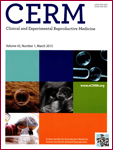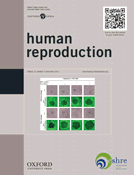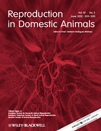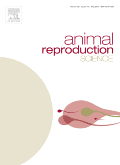
Reproductive Medicine and Biology
Scope & Guideline
Innovating insights in reproductive medicine and biology.
Introduction
Aims and Scopes
- Clinical Reproductive Medicine:
The journal emphasizes clinical research in reproductive medicine, including the evaluation of assisted reproductive technologies (ART), fertility preservation strategies, and management of reproductive disorders. - Molecular and Cellular Biology:
Research on the molecular mechanisms underlying reproductive processes, including gametogenesis, fertilization, and embryo development, is a core focus area, contributing to the understanding of reproductive biology at the cellular level. - Technological Innovations:
The journal highlights advancements in reproductive technology, such as artificial intelligence applications in fertility treatments, novel imaging techniques for embryo assessment, and the development of new diagnostic tools. - Endocrinology and Reproductive Health:
Endocrine factors affecting reproductive health, including hormonal treatments and their implications for conditions like polycystic ovary syndrome (PCOS) and endometriosis, are explored extensively. - Preimplantation Genetic Testing:
The journal includes studies on genetic testing techniques to assess embryo viability and genetic integrity, which are essential for improving outcomes in ART.
Trending and Emerging
- Artificial Intelligence in Reproductive Medicine:
There is a growing trend in the application of artificial intelligence for improving ART outcomes, including embryo selection and prediction of success rates, highlighting its potential to revolutionize clinical practices. - Impact of Environmental Factors on Reproductive Health:
Studies exploring the effects of environmental toxins, such as phthalates and cigarette smoke, on fertility and reproductive health are increasingly prevalent, indicating a rising awareness of external factors affecting reproductive outcomes. - Microbiome Research in Reproductive Health:
Emerging interest in the role of the microbiome in reproductive health, particularly its influence on fertility and pregnancy outcomes, is gaining traction, as researchers seek to understand the complex interactions at play. - Personalized Medicine Approaches:
Personalized and precision medicine in reproductive health is becoming a significant focus, with research aimed at tailoring treatments based on individual patient profiles, including genetic and hormonal assessments. - Integrative and Holistic Approaches to Fertility:
There is an increasing trend towards exploring integrative approaches to fertility, considering psychological, sociocultural, and lifestyle factors that impact reproductive health, moving beyond purely medical interventions.
Declining or Waning
- Traditional Fertility Treatments:
There is a noticeable decrease in studies solely focused on conventional fertility treatments, such as insemination techniques and standard IVF protocols, as newer methodologies gain traction. - Basic Reproductive Biology:
Research purely centered on basic reproductive biology, without a direct clinical application or technological aspect, appears to be declining, as the field moves towards more translational and applied research. - Single-Center Studies:
The prevalence of single-center studies in reproductive medicine publications has diminished, with a shift towards multicenter collaborations that enhance the generalizability and impact of findings. - Animal Model Research:
While still relevant, the number of studies utilizing animal models to explore reproductive issues has decreased, possibly due to a growing emphasis on human clinical trials and translational research.
Similar Journals

Gynakologische Endokrinologie
Championing Women's Health Through Scholarly DiscourseGynakologische Endokrinologie is a pivotal journal published by SPRINGER HEIDELBERG, dedicated to advancing the fields of endocrinology, obstetrics, gynecology, reproductive medicine, and pediatrics. With an ISSN of 1610-2894, this journal serves as a valuable platform for researchers and practitioners to disseminate their findings and explore emerging trends and treatments in the realm of women's health and endocrine disorders. Though currently positioned in the Q4 quartile across relevant categories, its mission is to foster scholarly discourse that bridges gaps in knowledge and enhances clinical practices. With a commitment to quality research, it provides a forum for innovative studies and case reports that could influence future healthcare strategies. Positioned in Germany, Gynakologische Endokrinologie aims to cater to a global audience, enhancing knowledge and collaboration in critical areas impacting women's health and hormone-related conditions.

Reproductive and Developmental Medicine
Empowering research for a healthier future in reproduction.Reproductive and Developmental Medicine is a pioneering open-access journal dedicated to advancing knowledge in the fields of reproductive medicine and developmental biology. Published by LIPPINCOTT WILLIAMS & WILKINS, the journal serves as a platform for researchers, clinicians, and graduate students alike, fostering collaboration and dissemination of innovative research findings. With an ISSN of 2096-2924 and E-ISSN 2589-8728, it has established a significant presence in the academic community since its inception in 2017. The journal is indexed in Scopus and achieved a category quartile ranking of Q3 in Obstetrics and Gynecology and Q4 in Reproductive Medicine as of 2023, highlighting its importance as a resource for cutting-edge studies and reviews in these vital areas. The journal's open-access model ensures that research is readily available to scholars and practitioners worldwide, thus enhancing the global discourse in reproductive health and development. This makes Reproductive and Developmental Medicine an invaluable resource for those dedicated to improving outcomes in obstetrics, gynecology, and reproductive health.

HUMAN REPRODUCTION UPDATE
Transforming Insights into Reproductive MedicineHUMAN REPRODUCTION UPDATE, published by Oxford University Press, stands as a leading journal in the fields of Obstetrics and Gynecology and Reproductive Medicine. With an impressive Q1 ranking in both categories according to the 2023 category quartiles and a significant Scopus rank, it is recognized as one of the top journals globally in these disciplines, catering to the most relevant and cutting-edge research. The journal has been a crucial platform for disseminating vital findings and reviews from 1995 to 2024, contributing to advancements in human reproductive health. With its focus on publishing high-quality, peer-reviewed articles, it serves as an essential resource for researchers, healthcare professionals, and students seeking the latest insights and developments in reproductive science. As the journal aims to foster informed discussions and encourage further research, it remains committed to shaping the future of reproductive health and medicine.

Clinical and Experimental Reproductive Medicine-CERM
Delivering High-Quality Research for a Brighter Reproductive FutureClinical and Experimental Reproductive Medicine (CERM) is a premier journal dedicated to advancing the field of reproductive medicine. Published by the Korean Society of Reproductive Medicine, it aims to disseminate high-quality research and innovative clinical practices in reproductive health and medicine. With its Q3 ranking in reproductive medicine for 2023, CERM is positioned as a significant resource for researchers and practitioners seeking to stay current with the latest developments and findings in the field. Since its inception in 2011, CERM has provided a vital platform for original research articles, review papers, and case studies that cover a range of topics, including fertility treatments, reproductive endocrinology, and embryology. Researchers benefit from its accessibility, inspiring new insights and evidence-based approaches to clinical practices. Based in South Korea, its rigorous peer-reviewed publication process ensures that all contributions meet high academic standards, making it an invaluable asset for anyone engaged in reproductive health research or practice.

MOLECULAR REPRODUCTION AND DEVELOPMENT
Exploring the intricacies of life at the molecular level.MOLECULAR REPRODUCTION AND DEVELOPMENT is a prestigious peer-reviewed journal published by WILEY, specializing in the intricate domains of Cell Biology, Developmental Biology, and Genetics. Since its inception in 1988, this journal has been a vital platform for disseminating pioneering research and innovative methodologies that advance our understanding of molecular mechanisms driving reproduction and development. With a current impact factor reflective of its significance in the field, MOLECULAR REPRODUCTION AND DEVELOPMENT is ranked Q3 in both Cell Biology and Developmental Biology, and Q2 in Genetics, underscoring its relevance and scholarly contribution. Catering to a diverse audience of researchers, professionals, and students, this journal not only showcases cutting-edge findings but also aims to foster interdisciplinary exchanges that enhance scientific collaboration. By exploring critical biological processes, it ultimately contributes to the broader understanding of health and disease in various organisms, making it an essential resource for anyone dedicated to the life sciences.

HUMAN REPRODUCTION
Advancing the frontiers of reproductive medicine.HUMAN REPRODUCTION is a prestigious academic journal published by Oxford University Press, dedicated to advancing the field of reproductive medicine. With an impressive impact factor highlighting its significance, the journal ranks in the top quartile (Q1) for Obstetrics and Gynecology, Rehabilitation, and Reproductive Medicine, showcasing its crucial role in disseminating high-quality research. Founded in 1986, it has become a key resource for researchers, practitioners, and students interested in cutting-edge developments and innovative practices in human reproduction. Despite not currently offering open access, the journal continues to publish a wealth of peer-reviewed articles that contribute substantially to clinical knowledge and practice. With Scopus rankings placing it among the top journals in its categories, HUMAN REPRODUCTION remains an essential platform for discussion and dissemination of vital findings impacting reproductive health globally.

Reproductive Sciences
Transforming Obstetrics and Gynecology Through ResearchReproductive Sciences is a premier journal published by SPRINGER HEIDELBERG, dedicated to the field of obstetrics and gynecology. With its ISSN 1933-7191 and E-ISSN 1933-7205, the journal has established itself as a leading source of high-quality research and clinical insights since its inception in 2007, and continues to converge its scope into 2024. Currently ranked in the Q1 category for obstetrics and gynecology, it holds the 43rd position among 209 journals in the Scopus rankings, underscoring its influence and relevance within the medical community. This journal is particularly dedicated to advancing knowledge in reproductive health, providing a platform for innovative research and clinical practices through both traditional and open access options. Located in Switzerland with an address in Heidelberg, Germany, Reproductive Sciences is not just a publication; it is a vital resource for researchers, professionals, and students seeking to make impactful contributions to the field of reproductive health.

Reproductive Biology and Endocrinology
Driving Discoveries in Endocrine Mechanisms and Reproductive HealthReproductive Biology and Endocrinology, published by BMC, is a distinguished open-access journal established in 2003, catering to researchers and professionals in the interdisciplinary fields of reproductive biology, endocrinology, and related biomedical sciences. With a notable impact in 2023, the journal has achieved Q1 rankings in Obstetrics and Gynecology, Reproductive Medicine, and Endocrinology, alongside a Q2 ranking in Developmental Biology, establishing itself as a pivotal source of high-quality research and insights. The journal's commitment to freely accessible research promotes knowledge dissemination across its domains, which is crucial for advancing understanding of reproductive health and endocrine mechanisms. With a robust Scopus ranking showcasing its relevance—17th out of 209 in Obstetrics and Gynecology, and 8th out of 90 in Reproductive Medicine—it serves as an essential resource for academics and clinicians alike, facilitating innovative research and fostering collaboration within the global scientific community.

REPRODUCTION IN DOMESTIC ANIMALS
Advancing the Science of Animal ReproductionREPRODUCTION IN DOMESTIC ANIMALS is a distinguished peer-reviewed journal published by Wiley that has been at the forefront of advancing knowledge in the field of animal science since its inception in 1966. With an ISSN of 0936-6768 and an E-ISSN of 1439-0531, this journal specializes in the intricate aspects of reproductive biology in domestic species, supporting both scientific research and practical applications in agriculture. Ranked Q2 in Animal Science and Zoology and Q3 in both Biotechnology and Endocrinology, the journal plays a crucial role in addressing contemporary challenges in animal reproduction, contributing significant insights to researchers, professionals, and students alike. Although it does not currently offer open access, its editorial team is committed to publishing high-quality studies that enhance our understanding of reproductive mechanisms and foster advancements in the field. The convergence of data, innovative methodologies, and practical implications in the journal fosters a rich dialogue among scientists and practitioners worldwide, making it an essential resource for anyone invested in animal reproductive health.

ANIMAL REPRODUCTION SCIENCE
Advancing the Frontiers of Animal ReproductionANIMAL REPRODUCTION SCIENCE, published by Elsevier, is a leading journal dedicated to the field of animal reproduction and developmental biology. With an ISSN of 0378-4320 and an E-ISSN of 1873-2232, it serves as a vital resource for researchers, professionals, and students interested in advancing their understanding of reproductive mechanisms across various species. The journal has been recognized for its high-quality contributions, achieving a Q1 ranking in Animal Science and Zoology and showcasing its significant impact in the areas of Endocrinology and Veterinary Medicine as per the 2023 category quartiles. Covering a wide range of topics from reproductive physiology to genetic implications, this journal not only highlights innovative research but also fosters interdisciplinary dialogue in the rapidly evolving world of animal science. Though not currently offering open access, it remains a crucial platform for disseminating pivotal research findings from across the globe. With its rich history dating back to 1936, ANIMAL REPRODUCTION SCIENCE continues to drive excellence in animal reproduction studies, positioning itself at the forefront of the field, and solidifying its relevance in both science and industry.